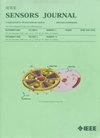Traceability of Green Tea Origin: An Adaptive Gas Features Classification Network Coupled With an Electronic Nose
IF 4.3
2区 综合性期刊
Q1 ENGINEERING, ELECTRICAL & ELECTRONIC
引用次数: 0
Abstract
Green tea from different origins develops unique qualities and flavors due to varying environmental factors, such as climate, soil, and water quality. Unfortunately, lower quality green tea is sometimes misrepresented as coming from prestigious origins. This study presents a fast, objective, and effective gas detection method combined with deep learning to assess green tea quality from different origins. First, gas information from green tea of six renowned Chinese origins is captured using an electronic nose (e-nose) system. Next, we introduce an adaptive gas features calculation module (AGFCM) that integrates deep gas features through two methods: multiscales convolution calculations and adaptive attention mechanisms. Finally, we propose an adaptive gas features classification network (AGFC-Net) to classify the gas information from different origins. Following structural optimizations, ablation studies, and comparison across classification methods, AGFC-Net achieves the best results, with 98.42% accuracy, 98.56%求助全文
约1分钟内获得全文
求助全文
来源期刊

IEEE Sensors Journal
工程技术-工程:电子与电气
CiteScore
7.70
自引率
14.00%
发文量
2058
审稿时长
5.2 months
期刊介绍:
The fields of interest of the IEEE Sensors Journal are the theory, design , fabrication, manufacturing and applications of devices for sensing and transducing physical, chemical and biological phenomena, with emphasis on the electronics and physics aspect of sensors and integrated sensors-actuators. IEEE Sensors Journal deals with the following:
-Sensor Phenomenology, Modelling, and Evaluation
-Sensor Materials, Processing, and Fabrication
-Chemical and Gas Sensors
-Microfluidics and Biosensors
-Optical Sensors
-Physical Sensors: Temperature, Mechanical, Magnetic, and others
-Acoustic and Ultrasonic Sensors
-Sensor Packaging
-Sensor Networks
-Sensor Applications
-Sensor Systems: Signals, Processing, and Interfaces
-Actuators and Sensor Power Systems
-Sensor Signal Processing for high precision and stability (amplification, filtering, linearization, modulation/demodulation) and under harsh conditions (EMC, radiation, humidity, temperature); energy consumption/harvesting
-Sensor Data Processing (soft computing with sensor data, e.g., pattern recognition, machine learning, evolutionary computation; sensor data fusion, processing of wave e.g., electromagnetic and acoustic; and non-wave, e.g., chemical, gravity, particle, thermal, radiative and non-radiative sensor data, detection, estimation and classification based on sensor data)
-Sensors in Industrial Practice
 求助内容:
求助内容: 应助结果提醒方式:
应助结果提醒方式:


